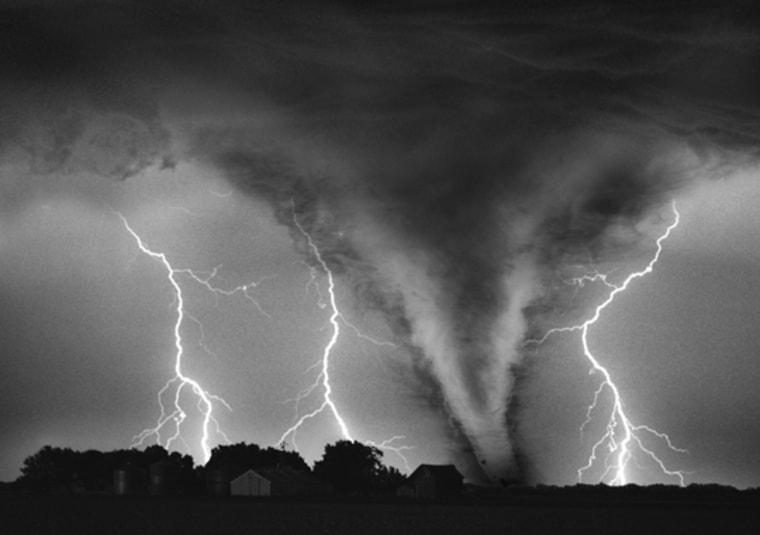In 2006, cyclone Nargis roared ashore in Myanmar in the Indian Ocean, devastating coastal communities and claiming an estimated 130,000 lives.
Initially packing winds of 90 miles per hour, Nargis caught forecasters by surprise when it suddenly intensified until winds reached 130 miles per hour just hours before landfall on May 2. New research is suggesting forecasters could have seen the danger coming, if only they had been watching the storm's lightning patterns carefully.
For the world's most powerful storms, hurricanes have surprisingly little lightning at their core. That's mainly because winds within 60 miles from the eye are horizontal, which prevents the huge updrafts necessary to form ice crystals and supercooled water that usually lead to lightning.
But Natalia Solorzano of Bard High School Early College in New York and a team of researchers found that with Nargis, large spikes in lightning activity occurred near the eye wall 36 hours before its deadly intensification. They attribute the increased lightning to a phenomenon known as "eyewall replacement," one of the many ways hurricanes intensify.
"Hurricanes are made of concentric rain bands," Solorzano said. "The eyewall is the innermost band. In changes in intensification it gets replaced by another band" from further out in the storm. The outer band usually has more updrafting associated with it, and more lightning activity.
As the outer band migrates inward, it causes large updrafts in the storm's core, which further increase the frequency of lightning strikes. But replacement can also signal weakening in the storm, and forecasters have to pay attention to all of the weather conditions surrounding the storm to predict how it will behave.
"You can't look only at lightning," Solorzano said. "But lightning helps you see that a storm is probably going to intensify, given that other conditions in the atmosphere are right for it."
In all, the team has examined the lightning patterns in approximately 50 tropical cyclones since their lightning detection network, the World Wide Lightning Location Network (WWLLN), became operational in 2005.
With the ability to detect lightning within 30 milliseconds after a strike, the team believes the WWLLN will soon become an important tool for hurricane prediction.
"They are heading down a very exciting, very promising path," Steven Businger of the University of Hawaii said of the team.
Businger operates the Long-range Lightning Detection Network (LLDN), which covers the Caribbean, Gulf of Mexico, and most of the Pacific Ocean. He and his colleagues have observed similar lightning behavior in hurricanes, but cautions that eyewall replacement isn't the only way storms change in intensity.
"Eyewall replacement isn't a requirement for cyclones to deepen, and some cyclones don't do it at all." he said. "During a replacement in hurricane Rita [in 2005] the inner eyewall was more electric, which is the opposite of what you'd expect. It goes to show you that these things don't always behave a certain way."
More on Predicting weather | Hurricanes
